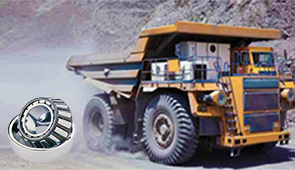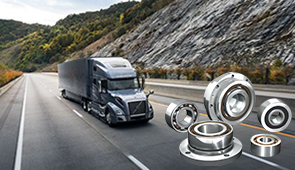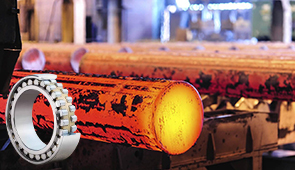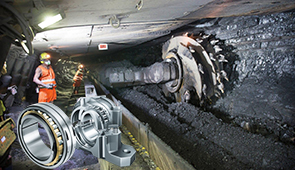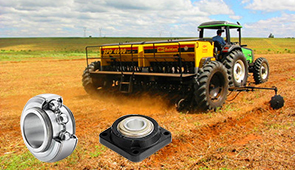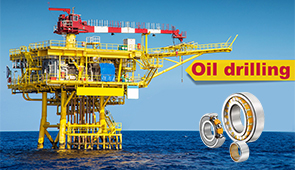Grease vs Oil: What’s the Difference Between These Crucial Lubricants?
When it comes to lubricants, grease and oil are two of the most commonly used substances, but their differences and specific applications are often misunderstood. Understanding the distinction between grease and oil is critical for ensuring optimal equipment performance, reducing wear and tear, and maintaining overall system efficiency. This article aims to provide a comprehensive overview of both lubricants, exploring their unique properties, ideal usage scenarios, and the engineering principles behind their functionality. Whether you’re working in industrial operations, automotive maintenance, or machinery design, this guide will clarify which lubricant best suits your needs and why.
What are the key differences between grease and oil?
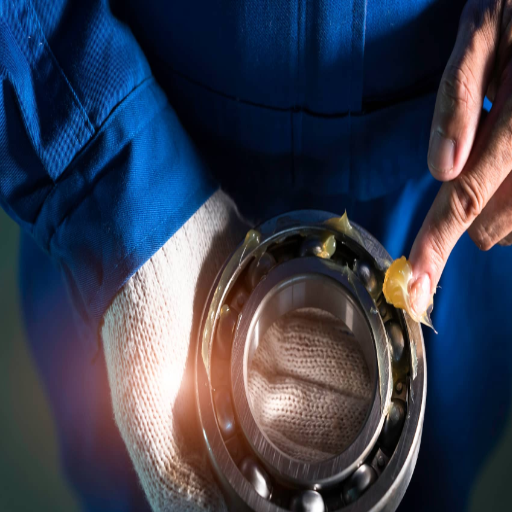
Composition: How do grease and oil differ?
The composition of grease and oil’s physical properties impacts their performance and composition. Grease is a thick lubricant meant to be semi-solid while having a base oil, thickening agent, and metallic soaps such as lithium or calcium alongside performance-adding agents. Grease acts perfectly for systems where lubrication maintenance is conducted less often since it adheres to the surfaces requiring protection while also being consistent.
Oil, however, is a thick lubricant composed of base oil and various performance-adding agents meant to enhance the oil’s performance such as anti-wear agents, heat corrosion inhibitors, or viscosity-altering agents. In dynamic systems with high speed and narrow tolerances such as engines and hydraulic systems, oil acts greatly in improving friction and heat.
- Viscosity: Both substances possess different ranges of temperatures. The oil possesses various grades of measurable viscosity while grease acts thicker hence possessing an NLGI grade between 000 to 6.
- Thermal Stability: Depending on the type of thickening agent utilized, grease has a dropping point of around 140 to 260 degrees. As for oil, it performs best in high-temperature ranges.
- Adhesion: Grime sticks readily to surfaces, so it is useful for use in applications where there are contamination barriers. On the other hand, oil floats effortlessly, making it ideal for systems requiring constant lubrication.
- Base Composition: Both have almost the same base oil, however, the addition of a thickener to grease affects the performance and range of applications drastically.
These differences highlight the fact that it is necessary to choose the right grease or oil depending on usage and environmental conditions.
Consistency: Why is grease thicker than oil?
The texture of greases is predominately determined by the type of thickener used; a component completely missing in oils. In short, the reason grease is thicker than oil is because the thickener sets into a semi-solid structure, allowing the grease to keep its shape and stick to surfaces under wide-ranging conditions.
- Thickener Type: Common thickeners used in grease include metallic soaps (like lithium and calcium) or non-soap materials which determine the grease’s behavior under pressure and temperature.
- The viscosity of Base Oil: The viscosity of the base oil within the grease directly influences its flow characteristics and load-bearing capacity.
- NLGI Grade: The National Lubricating Grease Institute (NLGI) scale rates grades from 000 (fluid-like) to 6 (hard) where higher grades convey higher levels of thickness.
These factors illustrate why grease is more useful in situations that depend on high adhesion and long-lasting lubrication, as grease is considerably thicker than unreserved flowing oils.
When should you use grease over oil for lubrication?
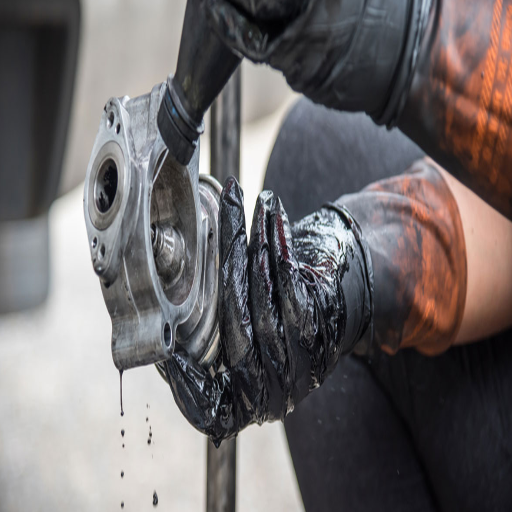
Advantages of using grease in bearings
The use of grease in bearings provides obvious benefits in instances where long-term performance and reliability are required. First, grease stays put better than oil because of its high viscosity. This is very important for parts that are vertical or exposed to vibration. These parts also provide lubrication and reduce the chance of leakage. In addition, grease provides a better seal against contaminants like dirt, dust, and moisture compared to oil which provides seals on the bearing surfaces.
- NLGI Grade: For multi-purpose bearings, grade 2 is often recommended because of its ease of being pumped and held stable.
- Base Oil Viscosity: The setting of proper viscosity corresponds to the speed and temperature at which the bearing operates. For high-speed operations, lower viscosity base oils are needed, while for low-speed and high-load approaches, higher viscosities are required (over 150 cSt at 40 degrees Celsius).
This allows for the use of grease in sealed or hard-to-reach bearings where service intervals are long and relubrication is not easy, which is often the case for machines that require minimal maintenance.
Situations where grease is preferred over oil
In my opinion, grease is more suitable than oil when long-term retention, environmental protection, or minimal re-lubrication is required. For example, in high-cycle or high-stay bearings, grease works better than oil because its thicker form ensures better retention than oil. Furthermore, grease is preferable in sealed systems which minimize dust, dirt, or moisture contamination because it acts as a seal.
- Consistency (NLGI grade): Greases with higher NLGI grades provide better stability than lower ones under harsh conditions, like in vertical shaft applications, where lubricant migration would be an issue.
- Temperature range: A lot of greases are designed to be exceptionally temperature stable, which is important in high temperatures where oils may thin or evaporate.
- Load-bearing capacity: Grease often contains extreme pressure (EP) additives to grease which creates a stronger load-resistant capacity for heavy machinery components.
- Re-lubrication intervals: Grease is easier to apply than oil, which makes it a favorable solution for components that are tough to reach.
Grease should, in principle, be used under those conditions where the above-mentioned requirements are met to achieve maximum and reliable operating conditions at all times.
What are the benefits of using oil instead of grease?
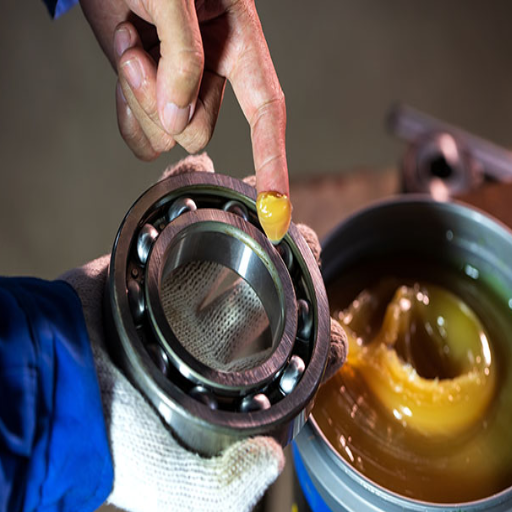
Cooling properties: How oils excel in heat dissipation
While assessing the cooling abilities oil possesses compared to grease, oil stands out due to its ability to dissipate heat because of its lubricating character as well as its unrestricted movement within the system. Unlike grease that sticks and stays in one spot, oil can absorb heat from critical parts and diffuse it throughout the system’s lubrication system or to another system designed for cooling like a heat exchanger.
- Thermal conductivity: Oils that have greater thermal conductivity help in the rapid transfer of heat from those components.
- Kinematic Viscosity, cSt: Moderately viscous oils allow free circulation without excessive resistance, diminishing frictional heat.
- Specific heat capacity: Oils that possess higher specific heat store greater quantities of energy and can be transported to different locations.
As a result, I would use oil in systems with high operational temperatures such as HEMS, high-speed bearings, high-load gearboxes as well as hydraulic equipment. This justification is valid where continuous temperature control is essential for efficient performance and prevents thermal damage to the equipment.
Situations where oil is the better lubricant choice
Oil is the lubricant of choice where applications require a high degree of thermal stability, effective heat dissipation, and prevention of oxidative degradation at extreme operating conditions. For example, in high-speed machinery, the maintenance of oil’s viscosity and lubricating qualities above its pour point aids in reducing wear. Such systems are oiled with oils with a viscosity index greater than 150 because they benefit from a wide operating temperature range.
In addition, the property oil possesses of forming a hydrodynamic film provides its advantage in high-load gearboxes by minimizing direct surface contact and consequently minimizing friction and wear. Oil blended with extreme pressure (EP) agents using sulfur or phosphorus compounds that help reduce gear scuffing accomplishes high efficiency here. These generally meet the performance requirements of API GL-4 or GL-5 performance specifications and fifteen loading applications.
Besides, oil in hydraulic systems serves the dual purpose of a lubricant and power transmitting medium. Its low compressibility rate (<0.5% at 3,000 psi) combined with excellent anti-foaming properties guarantee efficient and reliable operation. The oxidation stability of the oils together with a cleanliness level of ISO 4406 18/16/13 or better, employs greater resistance to contamination-related failures.
Therefore, the employment of oil is justifiable for applications demanding precision, durability, and reliable output under difficult conditions with well-defined specifications and standards relevant to the efficiency of operations.
How do grease and oil perform in different environments?
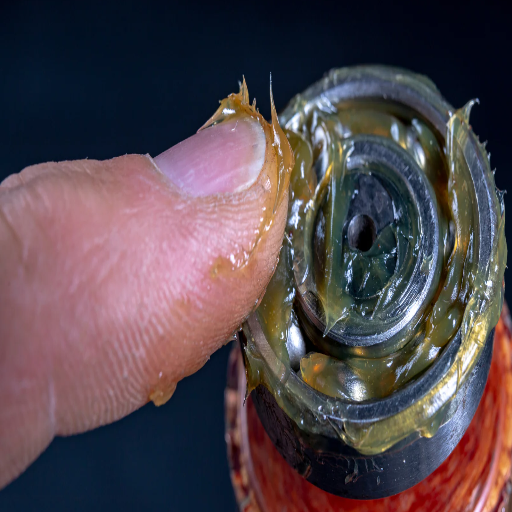
Temperature considerations: Grease vs oil performance
From a temperature perspective, both oil and grease behave differently and depend highly on the method of formulation and use. Since grease is thicker, it works well in high temperatures where torques and lithium complex or calcium sulfonate thickeners are added in high temperatures. These materials provide structural stability and resistance to run-off. For example, greases with dropping points greater than 250 degrees Celsius or 482 degrees Fahrenheit are ideal for extreme heat conditions.
In oil, however, effectiveness is noted in situations where heat dissipation is critical, especially in dynamic or high-speed operations. Here, viscosity is key – higher viscosity oils tend to perform best for lubrication under high pressure, but thicken excessively at lower temperatures, while thinner oil boasts of adequate performance during low-temperature startup at minus 30 to minus 50, depending on the base stock. Pao-based synthetic oils remain fluid over broad temperature ranges. Thus ensuring stable operations in subzero and high temperatures.
In conclusion, the selection between grease and oil is largely informed by unique operational, load conditions,s and system design which should all fit within technical such as operating temperature ranges, viscosity index (vi), and thermal stability.
Moisture resistance: Which lubricant offers better protection?
As for grease vs. oil, whilst oil can offer some resistance to moisture, grease is found to be superior in providing protection. Grease is mixed with thickeners which produces a certain layer or barrier, thus enhancing the water resistance and sealing capability of the lubricant. Water contact along with high levels of humid environments are nothing to be concerned about.
- Water Washout Resistance (ASTM D1264): If the grease has low water washout values, it displays an ability to endure water contact. Such greases are said to be displaced from the application area. This ensures washout resistance.
- Dropping Point: Greases must contain appropriate amounts of water as well as high temperatures. If grease has a high water dropping point, it proves eliminating water enables gels within the grease to remain solid.
- Additives: Rust-inhibiting greases provide the added protection that moisture allows corrosion. Issues caused by moisture are resolved with the introduction of calcium sulfonate.
- Base Oil Viscosity: The level of water resistance can be altered depending on the base oil viscosity when the oil is poured into grease. It is found that higher viscosity provides better resistance in wet conditions.
Some oils are specially formulated to possess added water resistance, however, such oils tend to have reduced thickness. As a result, it leads to higher displacement as well as loss of the oil in an aqueous environment. Hence why grease is ideal for maintaining strong moisture protection. Remember, when applying lubricant’s moisture resistance properties, make sure to consider the environmental and operational factors of the system.
What are the application methods for grease and oil?

Grease guns, brushes, and automatic lubricators
Depending on the level of accuracy, volume, and ease of access to the lubrication point, several approaches can be adopted for the application of oil and grease:
- Grease Guns: These controlled oil application devices are useful for accurate oil dispensing at specific sites of lubrication; they are mostly used in the industrial and automotive fields. Grease guns may be manual, pneumatic, or electric. Hand-operated models, typically used in industrial applications, dispense 3,000 to 10,000 psi, while some advanced models are equipped with sophisticated oil delivery systems that allow access to areas that were previously considered unreachable.
- Brushes: For low-volume application of oil and grease, these tools are the best option. Brush application is useful for surfaces where restraint is necessary because the oil can easily lead to contamination and malfunction of the machine parts.
- Automatic Lubricators: These are advanced systems designed for continuous or scheduled lubrication. They are capable of being single- or multi-point systems, with the ability to set flow rates and timing. These lubricators are the most useful in constant lubrication systems required for the continuous operation of heavy machinery or in high-temperature environments. Typically, these systems are set between 0.01 and 50 ml/day, but the actual setting depends on the arrangement of the system components.
Every method must be selected depending on the factors of operations and the environment to achieve the highest performance while protecting the components. Technical features like dispensing pressure, grease flow rate, and application precision must be set to match the operating scenarios of the system so that lubrication can be most effective.
Oil application techniques: Drip, spray, and bath methods
- Drip Method: This method utilizes a device known as a drip oiler, which enables the user to drizzle oil at a predetermined speed. Due to its precise application rate, this method is best suited for lubricating touches needed for a bearing, chains, and similar parts. The standard flowing speed for drip oilers is between 0.1 and 5 ml/min, depending on the situation. They are beneficial for use on low-speed machines, or on machinery that only needs intermittent lubrication.
- Spray Method: This method is optimal for covering large or intricately shaped parts with oil, allowing complex and high-speed machines such as the gears or chains to function smoothly without any friction. Using the device for places that are hard to reach ensures that these areas are not skipped over when being lubricated.
- Bath Method: In the bath method, sections of the machine like gears or bearings are put into a tank of oil. This enables lubrication and cooling to be done simultaneously while the machine is in use. This technique is popular in enclosed type systems like gear boxes where the oil has to be filled to certain levels to cover the parts.
Every method has to be chosen with consideration to the specific operating requirements which include but are not limited to temperature, speed, and the geometry of the components to achieve maximum productivity and prologue the life span of the equipment.
Frequently Asked Questions (FAQs)
Q: What is the main difference between oil and grease?
A: The main difference between oil and grease is their consistency. Oil is a liquid lubricant that flows freely, while grease is a semi-solid lubricant with a thicker consistency due to the addition of a thickening agent. This difference in consistency affects their applications and performance in various lubrication scenarios.
Q: When should I use oil or grease for lubrication?
A: Oil is used to lubricate components that require continuous lubrication, such as engines and transmissions. Grease is better suited for applications where frequent reapplication is difficult or where a lubricant needs to stay in place, e.g., in bearings or joints. The choice between oil or grease depends on factors like operating conditions, equipment design, and accessibility.
Q: What are the advantages of using oil as a lubricant?
A: Oil has several advantages as a lubricant. It can easily flow and distribute throughout a system, making it very suitable for complex machinery. Oil also has cooling properties, which help dissipate heat from moving parts. Additionally, oil can carry away contaminants and debris, helping to clean the system it lubricates.
Q: What are the benefits of using grease as a lubricant?
A: Grease offers benefits such as better adhesion to metal parts, providing longer-lasting lubrication in areas where oil might drip away. Its consistency allows it to form a protective barrier against contaminants. Grease is also ideal for vertical surfaces or components that operate intermittently, as it stays in place even when the machinery is not in use.
Q: Are there different types of greases used for specific purposes?
A: Yes, there are different greases used for various purposes. Some examples include high-temperature greases, water-resistant greases, and food-grade lubricants for use in food processing equipment. The type of grease used depends on factors such as operating conditions, environment, and industry-specific requirements.
Q: What are food-grade lubricants and when are they used?
A: Food-grade lubricants are specially formulated oils and greases that are safe for incidental food contact. They are used in food processing and packaging equipment where there’s a possibility of the lubricant coming into contact with food products. These food-safe lubricants meet strict regulatory standards to ensure they don’t contaminate food items during production.
Q: How does the quality of the thickener affect grease performance?
A: The quality of the thickener in grease significantly impacts its performance. The thickener forms a fibrous network that holds the oil in place, affecting the grease’s consistency, water resistance, and temperature tolerance. High-quality thickeners contribute to better stability, longer service life, and improved protection against contamination, making the grease more effective in various applications.
Q: What should I consider when choosing between lubricant and grease for a specific application?
A: When choosing between lubricant and grease, consider factors such as operating temperature, speed, load, environmental conditions, and accessibility for reapplication. Also, think about the equipment manufacturer’s recommendations, compatibility with seals and other materials, and any industry-specific requirements. For high-speed applications or those requiring heat dissipation, oil might be preferable, while grease could be better for slow-moving parts or those exposed to contaminants.
UCTH213-40J-300 with Setscrew(inch)
CNSORDERNO: Normal-duty(2)
TOGN: UCTH213-40J-300
SDI: B-R1/8
SD: 2 1/2
UCTH212-39J-300 with Setscrew(inch)
CNSORDERNO: Normal-duty(2)
TOGN: UCTH212-39J-300
SDI: B-R1/8
SD: 2 7/16
UCTH212-38J-300 with Setscrew(inch)
CNSORDERNO: Normal-duty(2)
TOGN: UCTH212-38J-300
SDI: B-R1/8
SD: 2 3/8
UCTH212-36J-300 with Setscrew(inch)
CNSORDERNO: Normal-duty(2)
TOGN: UCTH212-36J-300
SDI: B-R1/8
SD: 2 1/4
UCTH211-35J-300 with Setscrew(inch)
CNSORDERNO: Normal-duty(2)
TOGN: UCTH211-35J-300
SDI: B-R1/8
SD: 2 3/16
UCTH211-34J-300 with Setscrew(inch)
CNSORDERNO: Normal-duty(2)
TOGN: UCTH211-34J-300
SDI: B-R1/8
SD: 2 1/8









